A detailed description of the BUK SA-11 which could have shot down MH17
Update October 14:
A lot more information about the BUK and its missiles and warheads came out with the release of the DSB final report and the Almaz Antey press conference.
I will make some minor adjustments on this page about warheads and missile characteristics soon.
DBB, Russian Federation and Ukraine agree that 9N314 is the only warhead which has butterfly (or x-shaped, bow-tie ) shaped fragments. I need to adjust the table below!
——————————–
Alert
There isn’t a lot of information on the BUK systems available on internet. A lot of the information published on this site was supplied by an anonymous source of mine. While I am unable to judge if his information is correct, he seemed to be very knowledgeable.
However, this source later turned out to be Pro-Kiev. So information on this page can be written such that it is in the Ukraine advantage.
I decided to keep the information on this page as long as it is unproved the information is incorrect.
————–
A likely possibility is that MH17 was shot down by a surface to air missile (SAM). The missile would most likely have been launched by a so called BUK SA-11 system.
This post will explain in detail the BUK, it missles, the type of shrapnel, its guidance to a target, the capabilitities of this weapon system and much more.
The info from this post has been obtained from various sources. I am in contact with people who are expert in this field. Also I used publically available information on the SA-11 BUK.
This post will discuss the capabilities of the BUK system . The BUK has gone through various versions.
This BBC video shows some interesting info.
BUK types
There are severall generations of the BUK. Basically the SA-11 and SA-17 which is an upgrade of the SA-11.
The table below shows the most relevant information. The table will be updated if I find any error. Please let me know if you find mistakes in the table. Do provide me links to be able to verify.
17-10-2015 DSB states in final report the compatibility with warheads and missile is as shown in this image.
14-10-2015 added image in Warhead paragraph on 9N314 fragment sizes
22-3-2015 An earlier version of the table showed radome of BUK M1-2 is different from BUK-M1. That was a mistake and has been corrected.
22-3-2015 added photo showing BUK M1-2 with two types of missiles
22-3-2015 added several links for verification purposes
22-3-2015 table version 1.3 BUK-M2 can only use 9M317 missile.
Janes states that the 9N314 warhead can be used on the 9M317 missile. This source seems to confirm that.
9M38 missile dont have 9N314M warhead, only 9N310 or 9N314
Russian Minister Lavrov claims the 9M317 missile has a warhead which has parallelpipeds.
Another source says 9M317 has rods
Russia Today itself confirmed a while ago only Russian armed forces operate the Buk-M1-2 and Buk-M2 missile systems which Ukraine does not operate.
The 9A310M1-2 SPM can fire standard 9M38M1 missiles or new 9M317 missiles (developed by the Dolgoprudny Research and Production Enterprise). (source)
Verification the BUK-M1-2 can fire 9M317 as well here.
This website mentions the BUK-M2 is only capable to use the 9M317 missile. Check internet for BUK-M2 photos. They all have missile 9M317 (small chords) . This is another website on the BUK-M2 using 9M317.
Info on rod and lethal range of 9M317
This picture shows a BUK-M1-2 loaded with two types of missiles. The right one is a 9M38M1 (long chords) and the second from the right is a 9M317. (short chords).Picture taken from this website
This shows a BUK-M1-2 with 9K317 missile. This BUK is operated by Egypt Army.
Here another photo showing BUK M1-2 with 9M317 missile
The image below shows Russia still has BUK with 9M38M1 missile (long chord). This photo was taken in Russia near the Ukraine border. For more information see Ukraineatwar.
This video shows a BUK-M2 (with the flat radar radome) loaded with the older 9M38 or 9M38M1 missile during shootig exercise at Kaptusin Yar . (at 17:26 in the video)
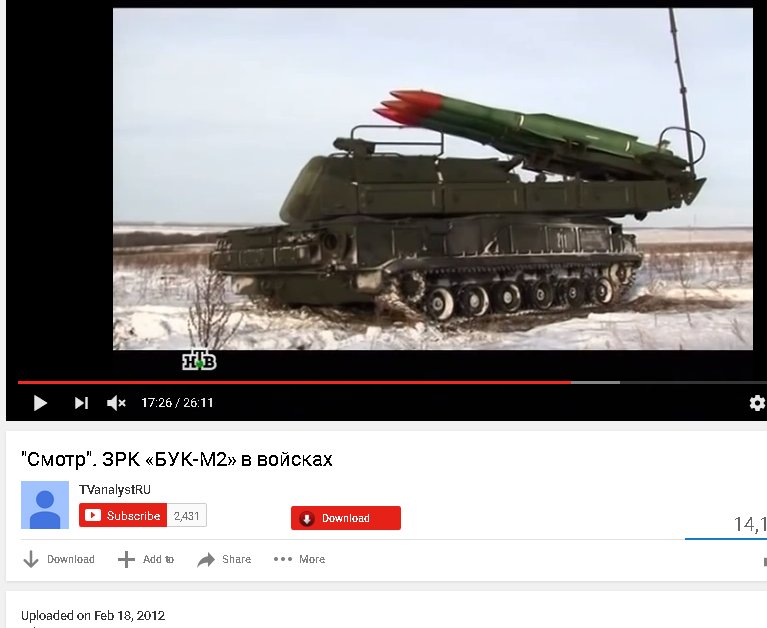
Bellingcat checkdesk has a lot more photos of BUKs in Russia. See here.

The BUK battery.
BUK (Beech) is the Russian name for what NATO calls a SA-11 Gradfly surface to air missile (SAM). A SA-11 is a Sovjet made medium range weapon designed to defend against aircraft, helicopters and cruise missiles. It can be compared to the US made Patriot system.
Its main task is to defend tanks and other armoured vehicles. It is said then when Russian tanks are deployed there will always be BUKs in the neighborhood.
A SA-11 normally operates in a battery or group of vehicles. There is a command vehicle (Command Post of CP) manned by a multiple people which control radar and launching. Then there are a couple of launcher vehicles. The name for this launcher is transporter erector launcher and radar or TELAR.
These have 4 missiles and built in radar installed on a tracked platform. To load additional missiles there is a loader vehicle. Last but not least there is a radar vehicle. It has a sophisticated radar which is able to track multiple targets. It is able to relay that radar information to the lauchers. The vehicle shown below is called the Target Acquisition Radar (TAR)

The radar named Snow Drift (shown above) has two ways to indentify the type of target:
- IFF or Identification Friend or Foe. Based on transponder information the radar knows if the target is a friendly aircraft , an civil airliner or a enemy aircraft.
- non-cooperative target recognition (NCTR). This systems analyses the pattern of the radar returns. It can determine the type of aircraft by a typcial footprint of the radar return Also jet engine modulation, or the analysis of beats and harmonics in the radar return that are caused by engine fan or compressor blades is used to determine type of target. The return is kind of unique for each type of aircraft because of its size, number of engines, speed etc.
The Snowdrift radar used to be the Achilles heel of the SA-11, its radar emmisions used to detect targets could also be seen and used to target itself with anti radar missiles.Once the radar was destroyed the complete battery could not function and was useless.
For that reason each launcher vehicle also has its own on-board radar called Fire Dome. This is a kind of backup radar with limited capabilities. Fire Dome radar detects aircraft flying at altitude over 3 km within a range of 65-77 km.
The H/I-band Fire Dome monopulse guidance and tracking engagement radar has an effective guidance range of 3-32 km and an altitude envelope 15 meters to 22 km, and can engage approaching targets moving at a maximum of 3000 km/h (1860 mph). The radar guides as many as three missiles against a single target. (source). Frequency used is 6-10 GHz. Frequency Band: H/I
This shows a BUK SA-11 battery in action with the Fire Dome radar and some launches of missiles.
The operating mode of a lone TELAR without assisting Snow Drift radar and other vehicles operation is called autonomous mode.
A TELAR operating on its own (not with the Snow Drift radar) does have IFF and NCTR as well. The onboard computer Argon-15 is connected with IFF and NCTR modules and provide info about target.
Without IFF permission target cannot be locked and a missile cannot be fired. However the commander can overrule and press a button so a missile will be launched, even if IFF says it is friendly aircraft.
More on IFF later in this post.
NCTR module send info about reverbations, shape of signal and also crew can hear voice of target thru on-board communicate system or see signal on screen.
NCTR on TELAR have lesser capability then on CP or TAR.
The main difference between capabilities of Command Post plus Target Acquisition Radar and just a TELAR (as used in MH17) is in the identification of targets. A CP/TAR st can use info from different sources (civilian net, other radars), but TELAR in autonomus mode only own info (but TELAR can be connected to CP and use TAR info and directed from range even launch missiles)
The speed indication on the radar screen is not the true airspeed of the target but the radial speed. This is the speed relative to the BUK TELAR radar. The operator can determine if the target is moving towards or away from the TELAR or SA-11 battery.
So if a target flies in a circle around the BUK the radial speed is 0.
When TELAR operates autonomously it takes about 24-27 seconds from target detection to missile launch. It can stop and launch its missiles in about 5 minutes from travelling. It also takes about 5 minutes to leave the firing position. (source).
The TELAR in autonomous mode is more accurate than when connected by a Command Post/TAR. In autonomous mode the accuracy is 180m. This means the TELAR radar can distinguish unique targets when they are 180 meters apart. When targets are closer there is a risk the wrong target is destroyed.
When the TELAR is connecte to CP/TAR the accuracy is 350 meter.
The image below shows a BUK SA-11. Image by Aviationweek.

Using the BUK
It is not easy to operate a BUK. Many people say it requires at least a year of training before someone is able to launch a missile and be able to hit the intended target.
The crew of a TELAR consists of:
- The Officer – commander (this man must be qualified and spent at least year in officer college or training course, all what going more than year is needed for tactical use of SAM battery (repair, organisation etc)
- 3 soldiers – these assist the command and had a few months of training course
When qualified personnel is available , a single man is required for operating the TELAR for launch (in situation like MH17 without ECM, enemy presence in air, etc), but deploy need help from other people.
When the BUK TELAR drives and reaches its place for launch, it takes 300 sec the prepare the system and be ready for fire
If radar is hot then ready time is 10sec
If radar is cold then more then 180 sec is needed (it hard cap and cannot be passed)
This knowledge does not exclude any party which could have downed MH17. A couple of people who used to work for the Ukraine army could have joined the separatists. It is not very likely though. Ukraine force or Pro-Kiev forces could be responsilbe. Also Russia could have supplied a BUK including personnel to operate it.
These are two photos showing the inside of a TELAR launcher vehicle. This has some shots of opertions of a SA-11 battery and launches of missiles.


The image below shows a close look at the radar screen of a BUK Telar. (source)
The big circle on the left is the radar screen. It shows the aircraft flying within reach of radar. Type is R4-SA
The rectangle screen is the guidance screen R4-V

shows in detail the operation in a BUK.
The launch
An interesting video of several BUK launches here.
The radar screen
A target on the radar screen looks like a small dash. The first picture below shows the radar screen taken from a BUK operator manual. The other screen is a screenshot of a computer simulation for the BUK. The two almost horizontal small lines indicated by the number 1 are targets in the air. As you can see there is no indication for the type of aircraft nor if it is friendly or enemy.
The radar can be used in three modes
- SEARCH mode
- LOCK and TRACK mode
- GUIDE mode
When search it scan area has a range of search for 50 or 100km
When target has been detected radar can LOCK target and TRACK it
When a missile has been launched the radar can GUIDE missile to the target
. 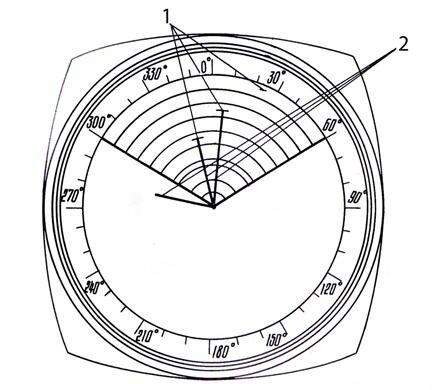

The zone in which the radar searches can be adjusted. The widest zone is 120 degrees (wide zone). Radar is the achilles heel of the SA-11 system. An enemy aircraft can easily detect the radar. As soon as a SA-11 system is detected it can be attacked by enemy planes. So it is important to keep the radar off when not needed and keep the width of the scan reduced if possible.
So the width can have two modes: either 120 degrees or 10 degrees (narrow zone).
The range (how far can the radar detect) can be set to two modes: either 0-50 km or 0-100 km.
The elevation angle of the radar is either 6 degrees or 10 degrees. A BUK TELAR in autonomous mode uses 120 degrees wide zone with an elevation of 10 degrees. This enables the radar to have a width view. However detection is more easily. When in a battery with multiple launcher a 10 degrees width x 6 degrees evevation is used.However when a TELAR in autonomous mode knows where the target is coming from or a spotter is used to detect targets a 10×6 angle can be used again to minimize detection.
Besides radar the BUK also has an optical system. The TOV (tv-optical visor) is used by the crew to visually check the target. However in cloudy conditions the target cannot be seen by the eye and operator has radar only.
The zones are displayed in this image takes from an actual SA-11 manual
This recorded in the Sovjet time shows the operation inside a BUK system.
at 4.19 you can see TELAR search radar scanning a wide zone (120 degree)
at 4.54 same radar
at 6.25 TELAR receive target info from TAR
at 6.30 target locked
at 6.32 search radar of TELAR switch to narrow zone scanning (10 degree)
at 6.36 1st crew member (soldier) on his tracking screen place the target signal in TELAR’s field of view so computer can now measure a range to target and calculate algorythm Meeting
at 6.53 commander unlock fire button and press it
Radar range
Spotter
A lone TELAR is very vulnerable for attacks by aircraft because of its radar. Radar is easy to spot when switched on. A common practise is to make use of the human eye. A so called spotter is positioned 30-50 km away from the launch position of the TELAR. When an aircraft is seen by the spotter, they communicate that over radio to the people in the BUK. Then they will switch on the turbo engine required for the Fire Dome radar. The powerup will take about 10 seconds. Then the radar can lock on the aircraft and a missile can be fired. By switching on the radar for short periods detection is reduced.
Versions of the BUK
There are many versions of the BUK. The system got many enhancements during its lifecycle and there are versions for sea and land operations. Also the vehicle has many versions like on wheels or tracks.
Basically the two most used types are BUK-M1 and BUK-M1-2.
The BUK-M1 can be recognized by its radar large TELAR radar. The BUK-M2 has a much smaller, almost flat radar.
The missile
A SA-11 can use different types of missiles. A missile uses rocket fuel. This provides about 15 seconds of thrust. Thereafter there is no fuel left. If the target is flying at a distance over 15 seconds the missile will go vertical first, gain speed and then descend, use gravity to reach its target.
The missile used by BUK-M1 is the 9M38M1.It is designed to engage fast maneuvering targets,The front of the missile has the radar and electronics. In the middle is the warhead and the back has the rocket engine.
The 9M38M1 missile is also used by Buk M1-2. This also is able to launch the newer 9М317 (with shorter wing chord)
A 9M38M1 has 4 control surface at the rear to maneuver. It is able to make 19G maneuvers when engaging its target.
A complete overview of missile types used by SA-11 and SA-17
9M38: the first missile developped -> 9K37 BUK and 9K12M4 KUB
9M38M1: better version of 9M38 -> 9K37M1 BUK M1, 9K37M1-2 BUK M1-2
9M317: better version of 9M38M1 -> 9K37M1-2 BUK M1-2 and 9K317 BUK M2
The 9M38 missile has a fuel burn time of 15 seconds. After 15 seconds the engine will not provide trust.
The 9M38M1 missile has a fuel burn time of 20 seconds.
1 – semi-active radar homing
2 – proximity fuse (9E241M1)
3- warhead
This photo shows a closeup of the 9M38M1 missile (source)

Target detection
The TELAR radar automatically categorizes targets by 3 types:
- aerodynamics; aircraft with moving engines with an airspeed of over 100 m / s
- ballistic missiles
- helicopters
The info is need for calculation of the trajectory of the missile. The commander can recognize the unique footprint of a target and when agreed with that this is the target he presses a button for launch. The onboard computer will do the calculations for guiding the missile.
This article in Russian language has a lot of detailed information on target recognition.
Identification friend or foe
This is a system to identify targets for being friendly or not. It must assure that a missile is not lauched at a friendly target.
IFF is device which sends to a target a calling impulse (coded) and must receive ans answer. It is a bit like how spies worked in the past in movies. To make sure they were meeting a friendly spy, one asked a secret question. If the correct answer was given the other spy was friendly.
The code system in IFF is top secret and changes sometimes in all devices.
Civilian aircraft do not carry equipment to respond to a IFF interogation. An exception are airliners from Canada and the US. So IFF is primarily for military aircraft.
On-board equipment of the TELAR in autonomous mode just give 2 signals: Enemy target (no answer on IFF) and aerodynamic target.
Very qualified personnel (which work with the BUK each day year by year) can separate a Boeing 777 (2 engine plane on 10 km altitude) from possible Antonov-26 (which flies on a much lower altitude) or Il-76 (4 engine cargo aircraft). But separatists can be under pressure by danger of destruction by an Ukraine fighterjet (or detection) by plane coming right on them.
In case an Ukraine BUK was used by separatists the operator would target military aircraft of Ukraine. However a missile would not lock on a friendly aircraft because of IFF. The missile could only lock on non friendly targets like MH17. This for sure must have been noticed by the operator. The operator can only launch on a friendly aircraft by overruling IFF notice.
In case a Russian BUK would have been used, both for an Ukraine military aircraft and MH17 would appear to the operator as enemy aircraft.
So the operator in the BUK that shot down might have been in this situation:
- he was instructed to shot down military aircraft flying fromm west to east. Ukraine forces were surrounded by separatists at July 17. The only way to supply them and get more soldiers to the area next to the Russian border was by air.
- A few days before July 17 an apparment in the are was bombed by a SU-25 and several civilians were killed
- The day before the Ukraine airspace was closed for civil aircraft up to altitude 32.000 feet
- the spotter might have reported an aircraft on high altitude. He might have seen an IL76 cargo aircraft
- On the radar screen the BUK operator did not see the target as friendly
- there was not an experienced officer which would double check the identity of the target.
- there was no possibility to check with civil air traffic control if the target was an airliner
So the operator did not use analysis of signal from target (and even did not see the altitude of target if they work in specific mode) and did not ask anyone about target source.
In normal operations with a SA-11 battery it would not be possilble to hit a civilian aircraft because several safety measures.
The launch
The launch of a BUK missile is pretty noisy. It leaves a smoke trail as can be seen in . A missile can be shot at an maximum angle of 80 degrees. So almost vertical (= 90 degrees)
The missile guiding
Once the missile has been lauched it is guided by the radar to the target using radar signals. The radar illuminates the target. The radar return is picked up by the missile. The missile receives control guidance from the ground using radio signals. This system is called a semi active homing radar.
Buk, Buk-M1 and earlier versions of Buk-M1-2 and Buk-M2 missile systems uses an Argon-15 type of the onboard computer. The Argon-15 is able to detect target radar signal (shape, length, reverbations, envelope and videosignal). Argon-15 does not give to the crew the ability to change target. The commander must choose target on stage Search, then Argon-15 calculate algorithm Meet Zone, then indicate Target in zone, commander open fire it all.
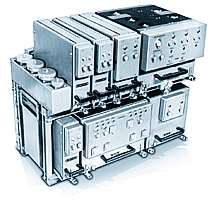
More information on the Argon-15 here.
When close to the target the seeker head (radar in the missile) will take over from the guidance of the TELAR and will continue its route towards the target.
The missile has a proximity fuse. This is fed by the radar. When the missile is within range the proximity fuse will detonate the explosive in the warhead. That will be around 17 meters from the target.
What if a Ukraine fighter was initial target but MH17 was hit instead?
A theory could be that Ukraine Air Force used civil aircraft as a human shield. Separatists told this in a video. A separatists lady (she married to one of the leaders of the DPR) told that Ukraine fighterjets would fly close to civilian aircraft, then decent quickly, release bombs and climb . Separatists could not hit the fighter because of the civil aircraft.
A missile targeted at a military jet cannot shift away off the orginal target to a new target after launch (this is called retarget). If a fighterjet like a SU-25 was flying so close to MH17 to merge with the radar signal , the fighter would have to fly within 100/180 metres to MH17. The radar of the TELAR is very accurate. Also a SU-25 is slower than MH17 even on clean weight nevermind altitude difference, a SU-25 is simply too slow to break the missile lock and escape from BUK missile at altitude. Even a less sophisticated SAM system as MANPADs were able to very efficiently kill SU-25 aircraft.
In 2001 a Tupolev 154 was destroyed by a S-200 SAM. During a military excersise a drone was used by Ukraine armed forces as target. Two S-200 missiles were shot at the drone. One S-200 destroyed the drone. The other S-200 probably never had a lock on the drone and searched for a target and headed to the Tupolev and shot it down.
In this case one of the pilots was able to detect the aircraft was hit. Also the aircraft exploded in mid air and was on fire. See this website.
An missile expert (Bernd Biederman) told in an interview that if an aircraft is hit by a surface to air missile it is very likely to be set on fire. This did not happen to MH17.
missile speed
The image below shows the speed of the missile on the vertical axis versus time of flight on horizontal axis. (source)
Sonic boom will be around speed of sound = 343 meters per second. This is reached by the BUK missile 2 seconds after launch.
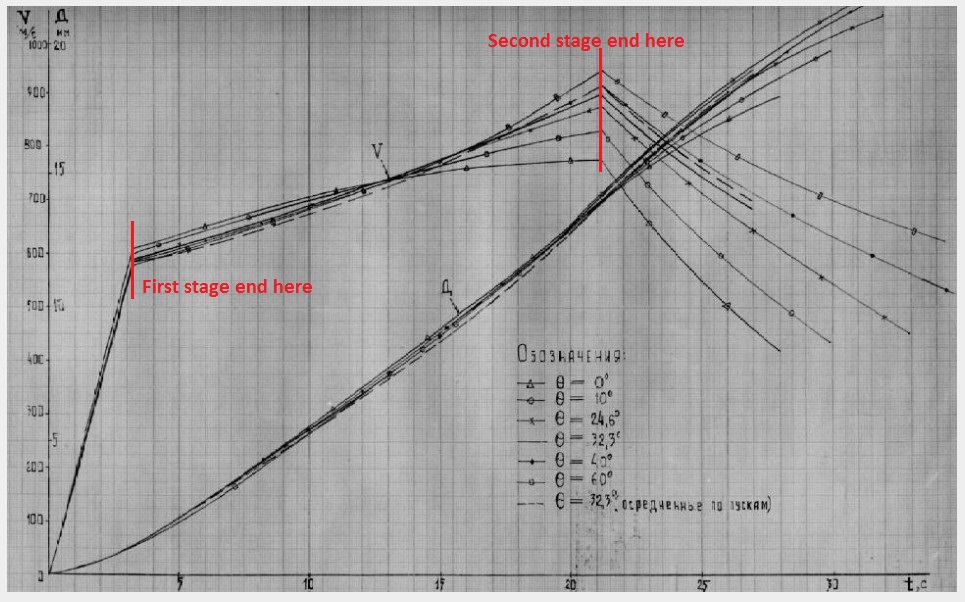
Missile lauch without lock
A missile of a BUK cannot be simply launched by pressing a button. The target needs acquisition, track, identify, lock and then a missile can be launched. All these procedures are automated instead of other systems where acquisition/tracking/lock and guide aredone by different systems and people. Only unsanctioned launches of missile can fire missile (it very rare but happen) but the warhead will detonated after a few seconds if there is no guidance from TELAR.
Below you see a photo an explosion of a missile launched by a BUK. The photo was taken during an excersise of the Ukraine army. shows the explosion as well. And here is a video as well. Finally which shows more launches.
Proportional navigation
A 9M38M1 uses what is called proportional navigation. Basically it means it does not tail chase the target but constantly calculates the future route of the target. By doing so the missile is able to cut corners and appraoch the target using the shortest route and thus saving as much fuel as possible.
To intercept high-speed targets like aircraft and missiles, a semi active homing missile must follow a lead (collision) course. The intercept point is at
the intersection of the missile and target flight paths. The best collision or lead course happens when the missile heading keeps a constant angle
with the line of sight to the target. This course requires missile accelerations to be only as great as target accelerations. Specifically, if the target flies
a straight-line, constant-velocity course, the missile can also follow a straight-line collision course if its velocity does not change. But in practice, this ideal
situation does not exist. Missile velocity seldom stays constant. Irregular sustainer propellant burning changes thrust, and therefore affects speed
The nose cone
The tip of the missile or nose cone can have various colours on photos.
Green/White missile is because during development the army want camouflage on missile, when used by the navy there is no need.
Red cone is protective metal cone on missile during loading or travelling and even firing – protect glass-ceramic radome from damage and dirt.
The radar seeker
This image shows the radar seeker of the 9M38M1 missile. The drawing on the right shows a more detailled inside look. The two extension on top and below are the antennas for receiving guidance instructions from the TELAR. These are marked by number 7 in this image.
The proximity fuse
The proximity fuse detects the distance to the missile its target. It detects the first metal part which is closest to the missile. For a BUK missile at around 17 meters from the target the fuse will let the explosives in the warhead explode. Because the explosives are in the core of the warhead and surrounded by fragments, the fragments will spread out.
The proximity fuse in a missile like BUK is “side looking” rather, than “front looking” (probably at an angle of about 60deg from missile axis to both sides). It is designed to detonate when it passes close to target, there is no point to detonate ahead of a typical aircraft target. The speed of shrapnels from the warhead is much higher than closure speed of the missile/target, so the warhead doesn’t work like a “shotgun shot”. It just explodes passing close to target and the shrapnels are thrown to the sides fast enough to hit it (shrapnel is several times faster than the missile).
Type of proximity fuses are 9E241, 9E241M1 and most recent 9E346.
So if the missile was going head-on horizontally or from above with slight side offset, then the warhead detonated as soon as the cockpit came into field of view (FOV) of side-looking proximity fuse antennas. And looking at the cockpit damage, it was only few meters, so most of the shrapnel was absorbed by front part of the fuselage with very high fragment density. The spread pattern of warhead shrapnels is not omnidirectional, almost all of the fragments are directed to the sides. Nearly all other plane parts were outside of the shrapnel kill-zone, only one wing and it’s engine could get some.
The image below shows the proximiy fuse angles of detonation (for type 5E50).
5E50 is a proximity fuse which is almost equal to 5E241M1 with some improvements near ground surface.
Depending from relative speed of the missile and target, the proximity fuse will give a command to detonate warhead.
The figure below shows how the detection angle depends from speeds. Basically, the faster the speed of the target, the more narrow the angle of detection, the more difficult to detect the target and thus the more unlikely missile will detonate.
On high speed angle near 30 degree, on slowest close to 60.
What is the x-axis. What is relative speed missile-target?
On the x-axis the sum of the speed of the missile plus the speed of the target is shown. The radar in the missile is able to calculate this speed based on the speed of the radar return from target.
The line numbered 2 is the scenario with MH17 (no electronic counter measures). A BUK missile is designed to attack enemy fighter aircraft which will execute electronic counter measures to distract the rader of the missile.
This article in Russian language has a lot of info on proximity fuse.
The warhead.
The warhead contains the fragments (also named shrapnel or strike elements) which damages the target with the intentio to destroy it.
The missile casing and components also form fragments.The identification of this warhead is 9N314. It has two layers of different sized fragments. The total number of fragments in the warhead is 7600.
The warhead lethal radius is 17 meters. This is an imaginary circle/sphere about the warhead within which any target will receive fatal damage.
The image below shows a closeup of this warhead. As you can see on the image of the missile, the warhead is located behind the radar and the proximity fuse. The roasted small metal parts are the fragments. In the middle of the warhead is explosives. The explosives will push the fragments out when the missile is close to the target.
The photo below shows a BUK warhead. Possibly the 9N314M
The image below show the 9N314 warhead
To compare the warhead of 5V28E V-880E (SA-5B Gammon) Surface to Air Missile 5B14S Warhead contains 21,000 pieces of 3.5g and 16,000 pieces of 2g steel ball fragments. (source)
A 9N314 has large and small sized fragments.
Large sized fragments create more damage (and better penetrate which is very much needed against armored plane/helicopters) and have lesser loss of energy with range, but larger size and weight decrease a number of elements which decrease probability for hit target surface (especially targets like missiles). Small sized fragments can be placed in much more numbers because their weight is less so more can be put in the warhead.
When the proximity fuse detonates, the explosive pushes out the fragments. The fragments will have an enormous kinetic energy. First because of the speed of the missile and then the extra boost from the explosion.
This is a cut through of the warhead. The piece indicated with 3 is the detonator. On the left side is the nose part of missile – compartment #1 with seeker, radio-fuse, autopilot. Diameter of missile is 340 mm. The warhead is situated in compartment #2 with varied diameter from 340mm to 400mm (#7 on picture is missile skin).
Compartment #3 (rocket engine and power supply) have already diameter 400m.
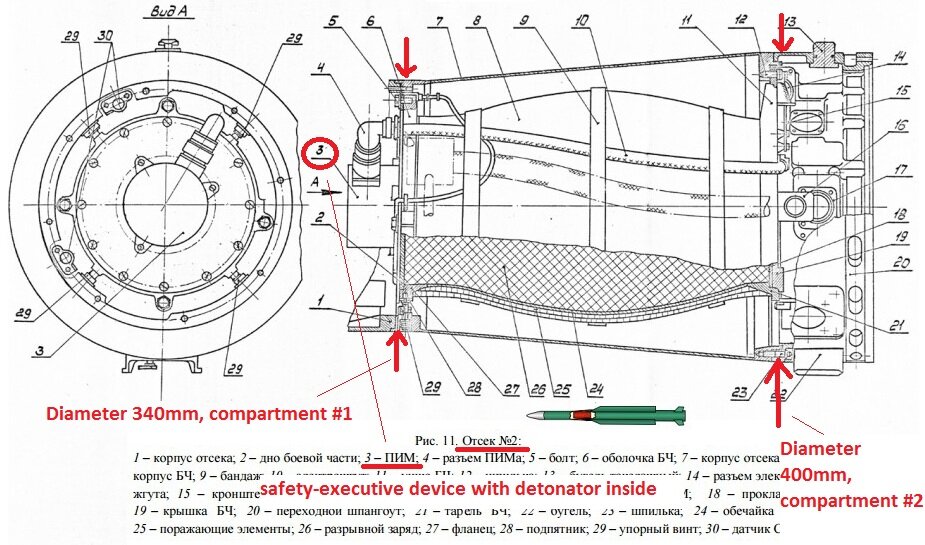
Type of fragments
Each warhead has fragments. Some have just one shape of fragments, some have up to three different shapes.
The image below shows the fragment sizes of a 9n314 warhead. The source is a presentation of Almaz Antey
The size and shape of the fragments in a 9N314M warhead can be seen in this image taken from appendix-x of the final report by DSB
Warheads have different ways to carry fragments. Basically there are two ways:
- ready fragments. The fragments are not tied to eachother. Individual fragments are placed in the warhead and stick together with some gell or glue. The advantage is that the energy of the explosion is not wasted by detaching the elements.
- pre-ready. The elements are attached to eachother.
The warhead of the BUK has ready elements.
The image below shows various type of warheads. Picture 3, 4 and 5 are pre-ready fragments. Picture 6 is ready fragments.
Possible design of missile warheads to destroy air targets: 1 – Blast; 2 – explosive charge in the metal shell; 3 – outer shell notching; 4 – internal notching; 5 – explosive charge with grooves; 6 – ready splinters; 7 – cumulative (with conical and spherical recess); 8 – multicell charge; 9 – rod; 10 – cutting; 11 – directed action;12 – aims to: 13 – cassette

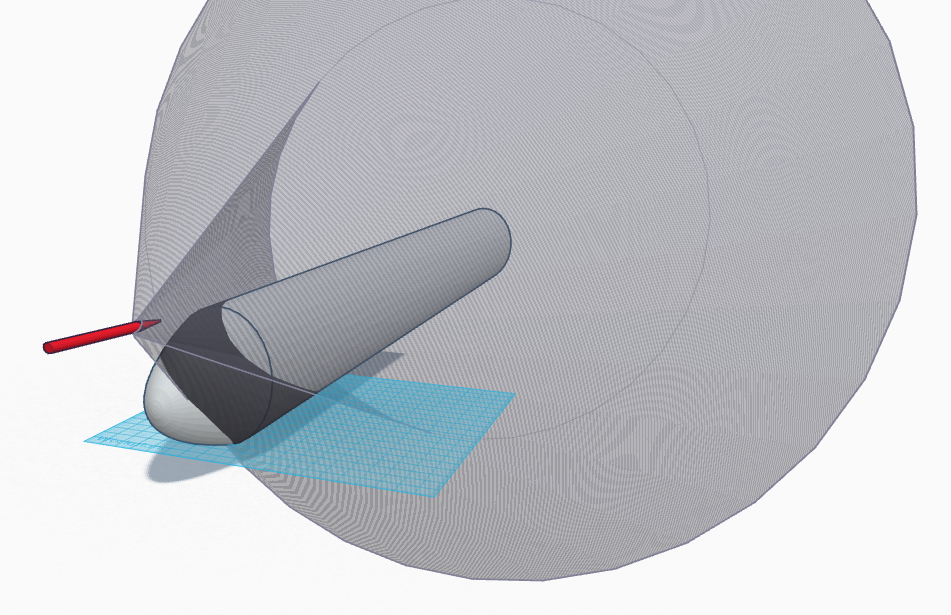
When the proximity fuse detonates, the explosive pushes out the fragments. The fragments will have an enormous kinetic energy. First because of the speed of the missile and then the extra boost from the explosion.
This is an interesting post which calculates if a SA-11 missile could be detected
This with some shots of the operators inside the vehicle.
This video also has a lot of coverage of BUK operation in Russia
One Missile, 298 Lives Lost: Profile of the Buk 9K37/ SA-11 “Gadfly” SAM (link)
International Electronic Countermeasures Handbook (link)

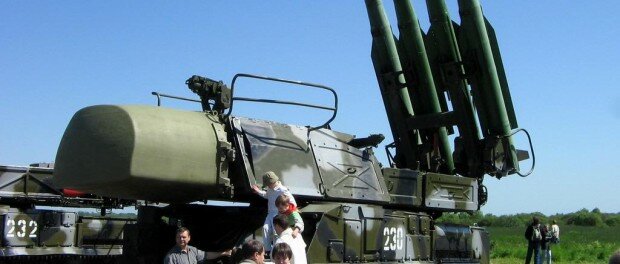




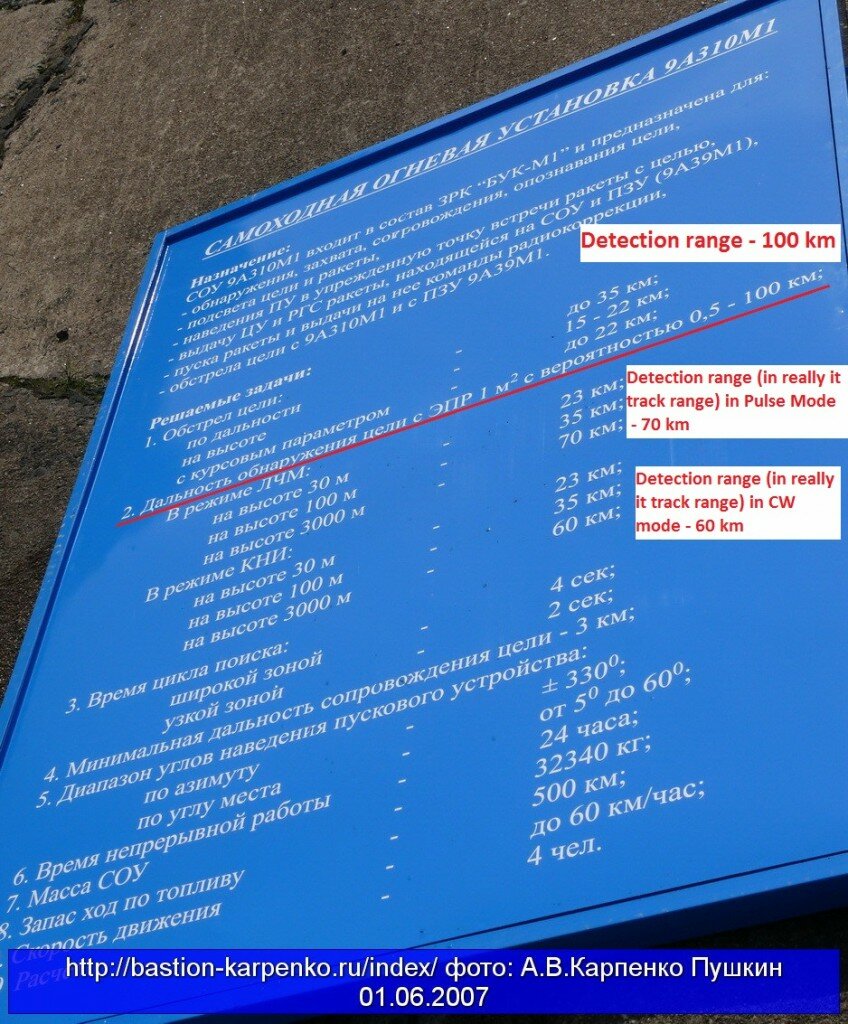
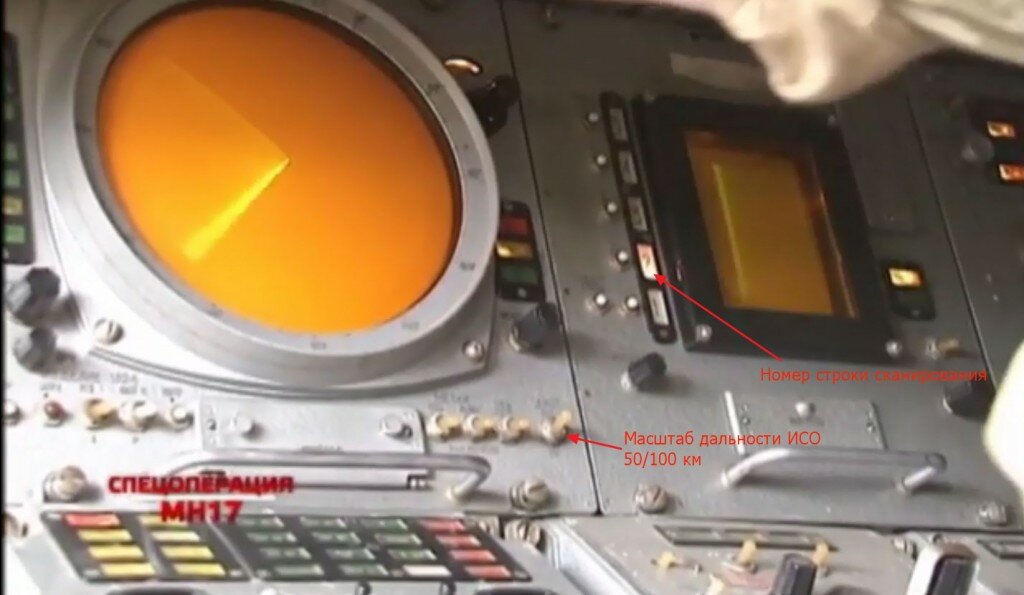



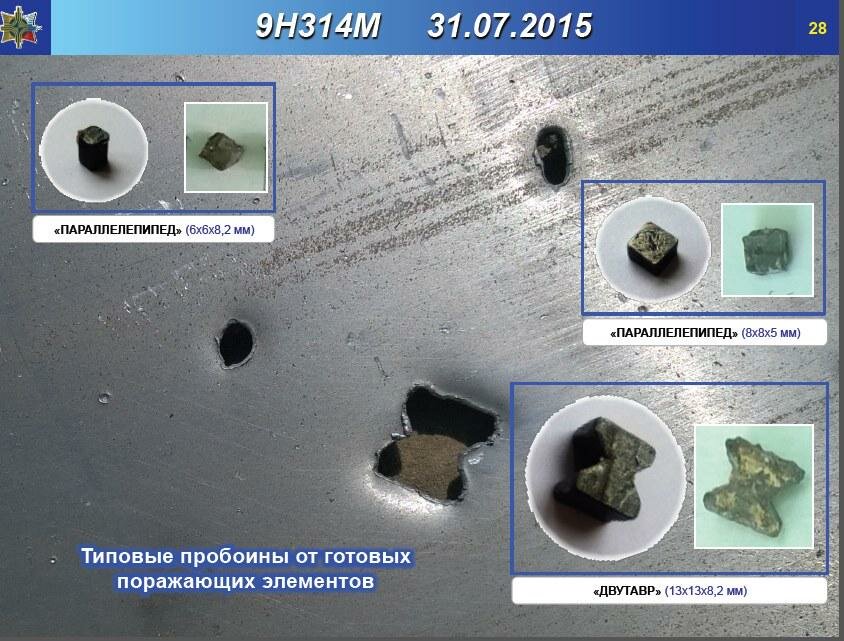




i would like to point out that the first picture in this article already messes things up. it is inaccurate a BUK missile will not come from under the plane. a BUK missile is designed to explode ABOVE its target. and all the damage on MH17 is either on the side or bottom of the plane.
Eyewitness say the fighter jet was below the airlines. If it is as you say, perhaps it exploded above the fighter jet but beneath the airliner?
From publicly available photos we see all shrapnel damage is on top/left of the cockpit.
That damage you see on the bottom is from where the warhead fragments passed through the Boeing 777 from the warhead detonation on the left hand side of the cockpit.
Thank you “admin” for your research on this topic, and a very informative post.
One question :
Do you have a reference to you statement that “shrapnel is several times faster than the missile” ?
This seems to be one of the few statements that you did not reference a source for, and also one of the few statements that seems to be incorrect.
Can you please elaborate ?
it smells fishy – the investigation should have been concluded 1 month after the accident at most. everybody has photo capable smartphones even in ukraine. where is the launch site photo of the buk? it makes a lot of noise and leaves a telltale smoke “comet”. where are the army of witnesses? many radars operated on that day including AWACS and many military radar sites in ukraine and russia. what about sat data from us russia china and EU? there are many missing links in the investigation. what about this ukrain oligarch who has his private army? who gained from this incident? who had the motive and the means?
Some answers to your questions:
Not everybody has cameras in their phones in rural Ukraine where the crash happened.
You can watch a photo of the smoke trail of the Buk at Snezhine region on the Bellingcat webpage.
You can reas about interviews of the witnesses on the VICE page, you must understand that the people living there are still under the separatist military occupation and their lives are at stake if they say something that could compromise their crime.
AWACS have limited range of operation, and the US would not divulge his military clandestine operations near the Russian border, it would naive to ask for that.
As for the oligarchs..well, you should ask Yakunovich, who now lives in Russia under the protection of Putin.
Cheers!
“military radar sites in ukraine and russia”
We have seen the video and images generated by primary radar of Rostov area. That radar data shows all “larger than missile” objects that flew higher than 1500…3000m from ground level.
On that radar video we see that Mh17 flew normally and suddenly broke in pieces. No other known or unknown planes around MH17.
So, snoopy, what new do you think military radar could show us?
Smaller than airplane/helicopter objects?
The missile?
What I would like to see is commercial satellite image providers to publish, for free, all images taken above Donbas around 17JUL2014.
Currently they ask for a lot of money for the images.
Is there any info around this:
“Depending on the initial distance of the target the missile will have a more vertical lauch pad.”
Is it really so?
(It makes difference if missile is heading upwards or downwards when it reach the target.
For MH17 … I think missile was heading slightly upwards and the damage on left wingtip is not from missile tail… but the damage is pretty big, it does have some carbon residue and green paint …)
The left wing tip indeed shows green paint which is certainly not the primer Boeing applied when building the aircraft.
If you look closely you seen two different colours of green. One is primer, the other could be from missile.
So the damage could be a good clue to the direction and distance of the missile launch location.
Thinking out loud about what flight path BUK system uses for the missile…
It has been said that TELAR is able to send BUK missile also to the more ballistic course towards the target. The idea behind it is that after rocket fuel is used, the missile can more easily maneuvre if target tries to avoid the it in the last seconds of approach.
But on the other hand, is it more important to reach the target as fast as possible, not going to the ballistic route.
Perhaps the ballistic option is meant against helicopter or ground targets.
Other things not clear to me (yet):
-Missile flight path profile from top view?
—Is it a straight line to the calculated collision point (in MH17 case)?
—Is the missile designed to “overshoot” the target a few meters?
—Is the missile designed to always head to (slightly) above the target?
-At what point in the flight the missile starts to use it’s own radar?
-It has been said the missile starts to explode 17m before the target. I think that is oversimplified. If the target is in 17m distance in front, in 45 degree angle to missile path, then ok (kind of), But if target is closer to missile flight path the 17m is not valid.
((I say the warhead start to explode instantly when some metal is in proximity antenna beam. 45 degrees for 1000m/s collision? Then small delay for electronics to work.))
-what would happen in head-on collision with the target? Collision or explosion? 😉
I just imagine the BUK missile is aiming like this…
1)Launch, unguided (0…5s)
2)TELAR guides missile towards the approximate intercept area (5…10s)
3)Homing to TELAR illuminated target + advance based on target radial speed (target speed info comes from TELAR)
4)self radar illuminated + homing, final aproach (<1km to target?)
(at this point missile might enter in pursuit mode?
or it continues in proportional mode by it's own math?
perhaps some simplified calculations based on
-target "radial" movement in radar view (direction)
-closing speed
-distance to target
-a: tries to reach interception point rather before than later vs the target (when coming from slightly below this works but not when coming from above. The upper side of an military aircraft is more "soft".)
b: to be able to hit also ground targets some methode is used to always aim slightly above??
Admin, that wasn’t Lavrov who said that the 9M317 missile has a warhead which has parallelpipeds. It was Major-General Igor Konashenkov, the official representative of the Russian Defense Ministry. If Lavrov also made the same statement then the link you provided does not mention it. http://ria.ru/mh17/20150319/1053501716.html
Any suggestions as to why the detonation was so close to the plane?
Also, do you know if the missile homes on the target’s radar equipment?
Interesting article. 🙂
-BUK tries to get as close to target as possible, because of this it has also fuse that detonates from impact.
-Warhead detonation is most efficient in close range.
-BUk is designed to hit also ballistic missiles that are far smaller in diameter than a fighter jet.
-Boeing-777 is far bigger than fighter jet
-Because of the proportional navigation in the final approach, IMO, missile almost surely start to bank away from target’s strongest radar echo, so it is almost impossible for it to collide with target.
-Because MH17 did not change it’s course, BUK made the ideal hit. IMO, detonation center was ~1m from cockpit surface.
“Also, do you know if the missile homes on the target’s radar equipment?”
BUK missile homes to TELAR sent radar radiation/dispersion from the target. It is designed to resist radar interference of other radar signal sources, so there is specific radar signal finger print that the missile search for and homes to.
Here is some material that I had not spotted before:
https://www.metabunk.org/almaz-anteys-live-buk-explosion-tests.t6903/page-3
Especially: http://makware.ru/download/ZRK_BUK_raketa_9M38M1.pdf
“Could a SA-11 missile be detected by satellite?”
My 0.2 cents to the above.
My IR/heat imaging experience is from TOW2 system that I’m trained to use.
In Finland all TOW systems come with heat sight / -crosshair.
With it one can easily see if someone is peeing or smoking outside his tent in 3,5km range.
The heat sight is fully insensitive to smoke.
But the heat sight is highly sensitive to fog.
It does not need much of fog to make TOW2 heat sight totally useless.
So, while the 500kg of burnt rocket fuel must be visible to satellite’s IR/heat sensors, I doubt it is visible through clouds.
Anyway, if there really was capable heat detecting satellite above Donbas, when the missile was launched, IMO, it might anyway see the missile AFTER it came above clouds (a few kilometers from launch location).
(I know TOW’s heat sight is old and obsolete technology, but law of physics anyway damber the heat radiation.)
+ After TOW missile has used it’s fule and it glides to the target, it has small heat/IR source at its tail.
Launcher’s IR sight detect this and guide the missile to the cross hair of the sight.
SO, after 15…20s of BUK missile flight it does not burn rocket fuel any more but it’s rocket engine’s cone is glowing and radiates heat.
I imagine the US satellite might have been designed to detect these fast moving heat sources, even the small ones.
Admin wrote : „Russian Minister Lavrov claims the 9M317 missile has a warhead which has parallelpipeds.
Another source says 9M317 has rods“
Buk M1-2 and Buk M2 uses only 8x8x6,5mm cubes as Almaz Antey stated here at 5:19:
So Lavrov was right.
Incorrect. There is no M1-2 missile.
There exist M1 and M2 missiles.
M1 missiles use bowties, M2 missile use cubes/”parallelpipeds”.
BUK TELAR M1 can use M1 missile.
BUK TELAR M1-2 can use M1 and M2 missiles.
BUK TELAR M2 can use M1 and M2 missiles.
Clear now?
Admin’s source who says 9M317 has rods also says this at the bottom of the page linked by admin: “Site is a private collection of materials and is an amateur informational and educational resource. All information is obtained from public sources. The administration does not apply for authorship of the materials used. All rights belong to their owners”
The source does not cite where in the public domain the information was found, not does the source claim that the public source (whatever that is) is an authoritative source. The source admits to amateur status.
So yes, Lavrov is correct. That comes as no surprise.
Not that it matters. A Buk wasn’t the murder weapon, and the sooner we stop wasting energy on Buk trivia and Buk scenarios the better.
If someone could show authoritative evidence that there were Buk missiles with 40 kg warheads packed with 8x8x6 mm cubes that would be interesting.
” A Buk wasn’t the murder weapon”
Yeah, pro-Russia trolls say so.
All the evidence point to BUK and launch from ahead.
No fighterjet https://pbs.twimg.com/media/Cizez83WgAErEjF.jpg:large
Found fragments match only BUK M1: https://pbs.twimg.com/media/Ci5auvRWUAAiDna.jpg:large
70kg BUK warhead did very little damage to IL86 while this happened to MH17:
(only grazy people think it was something smaller than 70kg, IMO)
All indicators point to BUK, IMO:
BUK scrathed the wing and BUK piece was inside the wing
Eyewitness recorded 17Jul saw only the BUK missile etc.
Even Almaz-Antey agreed it was BUK & M1 missile.
etc.
MH17 is a crime investigation which means fact finding is the only way to proof. In crimes often misleading information is given. That’s why we use our intuition by formulating a lot of adaptive scenarios. Humans are always lead by intuition in finding the truth, but in the end every scenario has to be proven by irrefutable facts.
If the disaster with the MH17 was a normal accident we immediately accepted a lot of ‘circumstantial evidence’. But knowing the crash site was unattended for many months we are forced to make restrictions.
The first is we must require the conditional probability of identifiable impressions in the hull of fragments impacting the plane. If a bowtie is found in the body of a crew member we require butterflies in the hull of the cockpit. The second condition is that after publication of the DSB report we do not accept any new butterflies in the hull as trustworthy.
This very conservative approach acts as a filter against nonsense information, but possibly also invalidates real evidence. These are the consequences of a bad design by the intentional sabotage of the Dutch government.
If we accept the albert_lex research as the only reliable investigation on the impact holes of the wreckage then the profile of warhead 9N314M (bowties) passes the test, but not the warhead itself. Very old Ukrainian warhead 9N314 is falsified for it has no category 6. And modern Russian warhead 9N318 is falsified because with squares 8x8x6.5 it is impossible to find lots of squares with width of 6 mm. This means from albert_lex the only BUK warhead used could be the bowtie variant 9N314M. But it is not proven.
Admin almost perfectly falsified the bowtie found by RTL. This invalidates all bowties for court but not for science. The bowtie found in the body of the captain of team A is questionable because this investigation is confounded by the autopsy in the Kalininskiy mortuary. In the DSB report no information is given about the way the bowtie was retrieved. Also the fragment in the body of the purser definitely is not from the same steel.
The only evidence passing the test of conditional probability is the squares in the hull and the foreign (rocket) part in the frame of the cockpit, and the confirmation of a profile alike warhead 9N314M.
This means we have a lot of freedom to develop new scenarios. Because we cannot trust the Russian radar we might think about A2A with (sorts of) squares. We found no bullet holes. If it cannot be a BUK because of the detonation point then it must be a smaller SAM or an A2A. And if it cannot be a lithium bomb then I think the only cause lies in the construction of the cockpit of the MH17 itself, which simply cannot stand a small A2A. The cockpit broke off from the fuselage immediately, that’s a fact.
“Buk M1-2 and Buk M2 uses only 8x8x6,5mm cubes as Almaz Antey stated here at 5:19”
False,AA graph shows 9M317 missile has cubes and states they are not listing other fractions
btw, I wonder if this is true:
When 9М38M1 launched from TELAR M1, range is 3,3–35 km
When 9М38M1 launched from TELAR M1-2, range is 3–42 km
https://en.wikipedia.org/wiki/Buk_missile_system
(note that also TELAR M2 can use 9М38M1, as shown in photos)
one of the numerous M1 missile sightings at RU after MH17:
http://www.alamy.com/stock-photo-boy-is-playing-with-military-technics-stpetersburg-russia-23082014-72927387.html
It’s entirely unclear if they are in any way operational (in maintenance) or just largely disabled mock-ups for parades. To use this as counter-claim, that needs to be known first.
For example, the day of the photo is August 23 “The day of Kursk battle victory”. big thing, for Russians with memory. So display of a lot of older equipment would not be out of the question since it’s aimed at veterans. Perhaps the whole museum is being dragged on the street. Just saying…
More M1 missiles & systems…
They use them as long as they fly?
Admin, where is the info from that ukraine would be still using first generation of missiles?
(9M38 missiles would be 35 years old by now?)
I does not seem sane when they had 991 M1 missiles in 2005 and wanted to buy more according to Almaz-Antey.
This training model of 9N314
https://whathappenedtoflightmh17.com/wp-content/uploads/2015/03/9n314-169×300.jpg
does not look like original 9N314
https://whathappenedtoflightmh17.com/wp-content/uploads/2015/03/warhead.jpg
perhaps there exist some 9N314+ model that has similar “lancet” as 9N314M…